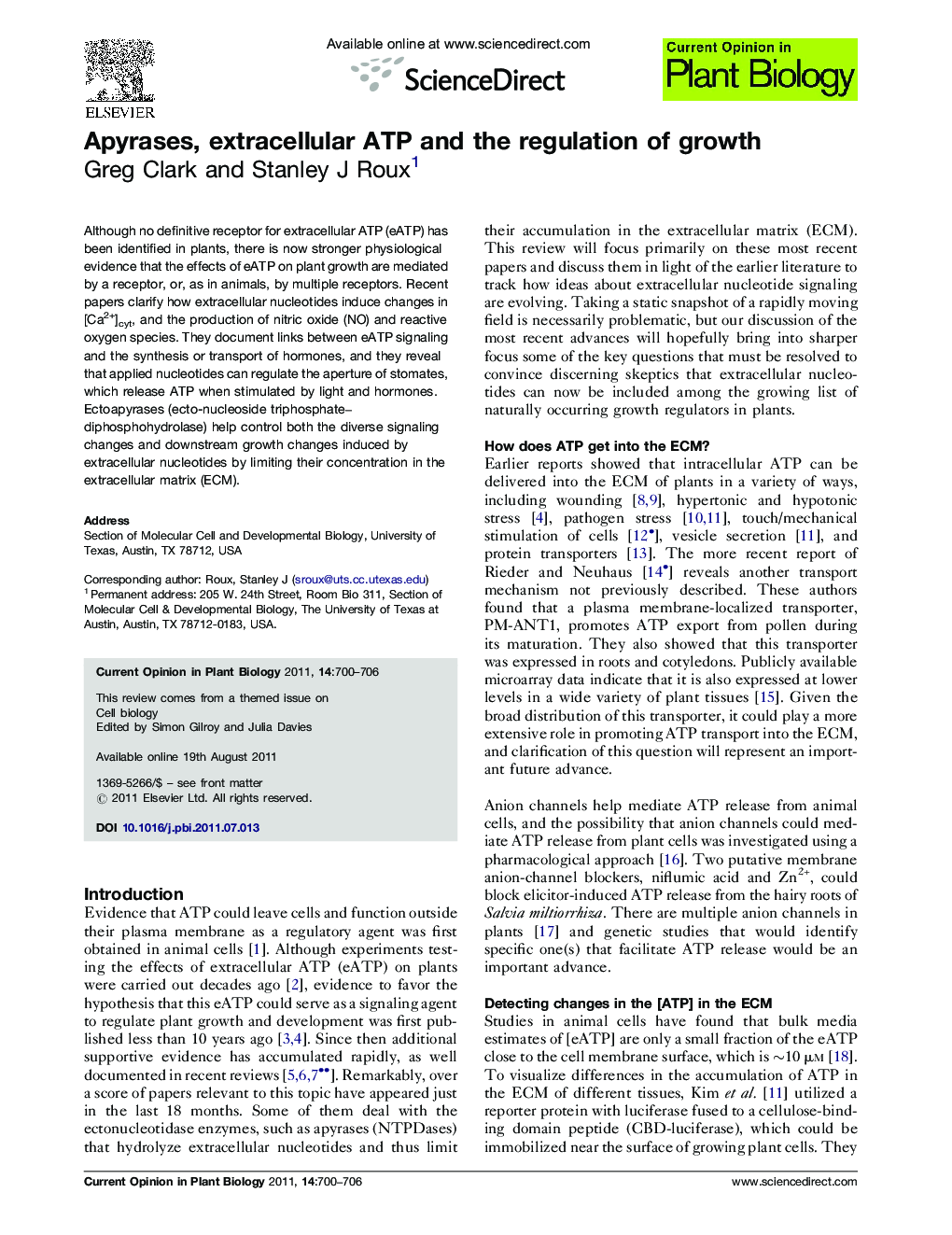| کد مقاله | کد نشریه | سال انتشار | مقاله انگلیسی | نسخه تمام متن |
|---|---|---|---|---|
| 2046207 | 1073763 | 2011 | 7 صفحه PDF | دانلود رایگان |

Although no definitive receptor for extracellular ATP (eATP) has been identified in plants, there is now stronger physiological evidence that the effects of eATP on plant growth are mediated by a receptor, or, as in animals, by multiple receptors. Recent papers clarify how extracellular nucleotides induce changes in [Ca2+]cyt, and the production of nitric oxide (NO) and reactive oxygen species. They document links between eATP signaling and the synthesis or transport of hormones, and they reveal that applied nucleotides can regulate the aperture of stomates, which release ATP when stimulated by light and hormones. Ectoapyrases (ecto-nucleoside triphosphate–diphosphohydrolase) help control both the diverse signaling changes and downstream growth changes induced by extracellular nucleotides by limiting their concentration in the extracellular matrix (ECM).
► New data on modes of ATP release from cells and its detection in the ECM.
► Stronger electrophysiological evidence for multiple receptors for extracellular ATP.
► Stomatal aperture regulated by eATP; stomates release ATP while opening or closing.
► Apyrase expression correlated with growth and with increased levels of eATP.
Journal: Current Opinion in Plant Biology - Volume 14, Issue 6, December 2011, Pages 700–706